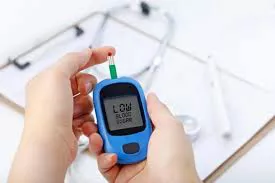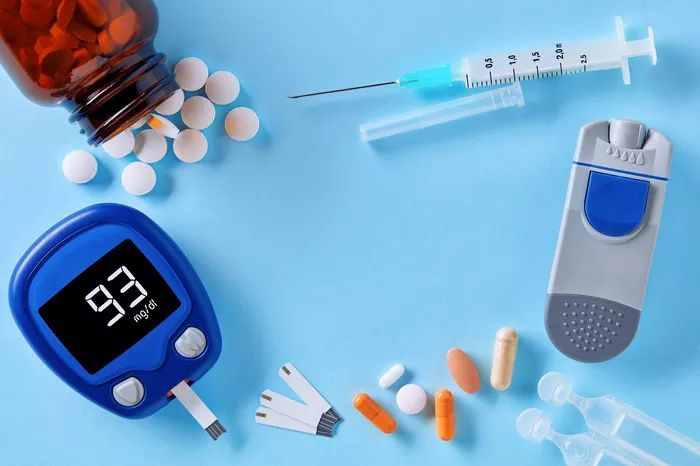Metformin is widely recognized as the first-line treatment for type 2 diabetes due to its efficacy, safety profile, and cost-effectiveness. However, various other medications are available for managing diabetes, each with unique mechanisms of action, benefits, and potential side effects. This article provides a comprehensive overview of medications similar to metformin, exploring their mechanisms, uses, and comparative effectiveness.
Overview of Metformin
Mechanism of Action
Metformin is an oral antihyperglycemic agent belonging to the biguanide class. Its primary mechanism of action includes:
Reducing Hepatic Glucose Production: Metformin decreases the production of glucose in the liver, particularly through the inhibition of gluconeogenesis.
Enhancing Insulin Sensitivity: It increases the sensitivity of peripheral tissues to insulin, facilitating better uptake and utilization of glucose by cells.
Improving Peripheral Glucose Uptake: Metformin enhances the uptake of glucose into muscle cells, contributing to lower blood glucose levels.
Benefits and Limitations
Benefits:
Effective Glycemic Control: Metformin effectively lowers blood glucose levels and HbA1c.
Weight Neutral: It generally does not cause weight gain and may even contribute to modest weight loss.
Cardiovascular Benefits: Some evidence suggests that metformin has cardiovascular benefits, including reduced risk of heart disease.
Limitations:
Gastrointestinal Side Effects: Common side effects include nausea, diarrhea, and abdominal discomfort.
Lactic Acidosis Risk: Although rare, metformin can cause lactic acidosis, particularly in individuals with renal impairment or other contraindications.
Medications Similar to Metformin
Several classes of medications are used to manage type 2 diabetes, each with mechanisms and effects similar to or complementing those of metformin. These include:
1. Sulfonylureas
Sulfonylureas are oral hypoglycemic agents that stimulate insulin secretion from the beta cells of the pancreas. They are often used when metformin alone is insufficient to control blood glucose levels.
Common Sulfonylureas:
Glipizide: A commonly used sulfonylurea that stimulates insulin release and lowers blood glucose levels. It is often prescribed in combination with metformin for enhanced glycemic control.
Glyburide: Another sulfonylurea that stimulates insulin secretion. It is effective but may be associated with a higher risk of hypoglycemia compared to other sulfonylureas.
Glimepiride: A sulfonylurea with a longer duration of action and a lower risk of hypoglycemia. It is used to enhance glycemic control in combination with other medications.
Mechanism of Action:
Insulin Secretion Stimulation: Sulfonylureas bind to sulfonylurea receptors on pancreatic beta cells, promoting insulin release.
Benefits and Limitations:
Benefits: Effective in lowering blood glucose levels, often used in combination with other agents.
Limitations: Risk of hypoglycemia, potential for weight gain, and diminishing efficacy over time.
2. Thiazolidinediones (TZDs)
Thiazolidinediones are a class of oral medications that improve insulin sensitivity. They are often used as an alternative or in combination with metformin.
Common TZDs:
Pioglitazone: A TZD that enhances insulin sensitivity in muscle and adipose tissues, leading to improved glucose uptake.
Rosiglitazone: Another TZD that increases insulin sensitivity and reduces insulin resistance.
Mechanism of Action:
Peroxisome Proliferator-Activated Receptor Gamma (PPAR-γ) Activation: TZDs activate PPAR-γ, a nuclear receptor involved in glucose and lipid metabolism, thereby improving insulin sensitivity.
Benefits and Limitations:
Benefits: Effective in improving insulin sensitivity and glycemic control, often used when metformin is not sufficient.
Limitations: Potential for weight gain, fluid retention, and increased risk of heart failure. May also be associated with an increased risk of bone fractures.
3. Dipeptidyl Peptidase-4 (DPP-4) Inhibitors
DPP-4 inhibitors are oral medications that enhance the body’s own insulin production in response to meals. They are used to improve glycemic control with a low risk of hypoglycemia.
Common DPP-4 Inhibitors:
Sitagliptin: Enhances insulin secretion and decreases glucagon levels, leading to improved blood glucose control.
Saxagliptin: Similar to sitagliptin, it improves glycemic control by inhibiting DPP-4 activity.
Linagliptin: A DPP-4 inhibitor that improves insulin secretion and decreases glucose production.
Mechanism of Action:
Inhibition of DPP-4 Enzyme: DPP-4 inhibitors prevent the breakdown of incretin hormones, which enhances insulin secretion and suppresses glucagon release.
Benefits and Limitations:
Benefits: Effective in lowering blood glucose levels with a low risk of hypoglycemia. Generally well-tolerated.
Limitations: Limited impact on weight and potential risk of pancreatitis.
4. SGLT2 Inhibitors
Sodium-glucose co-transporter 2 (SGLT2) inhibitors are a newer class of oral medications that help lower blood glucose levels by increasing glucose excretion in the urine.
Common SGLT2 Inhibitors:
Canagliflozin: Reduces blood glucose levels by increasing glucose excretion through the kidneys.
Dapagliflozin: Another SGLT2 inhibitor that lowers blood glucose levels and has shown cardiovascular benefits.
Empagliflozin: Effective in lowering blood glucose levels and reducing cardiovascular risk.
Mechanism of Action:
Inhibition of SGLT2: SGLT2 inhibitors block the reabsorption of glucose in the renal tubules, leading to increased glucose excretion and lower blood glucose levels.
Benefits and Limitations:
Benefits: Effective in lowering blood glucose levels, promoting weight loss, and offering cardiovascular benefits.
Limitations: Risk of urinary tract infections, genital infections, and dehydration.
5. GLP-1 Receptor Agonists
Glucagon-like peptide-1 (GLP-1) receptor agonists are injectable medications that mimic the effects of the GLP-1 hormone, enhancing insulin secretion and reducing appetite.
Common GLP-1 Receptor Agonists:
Exenatide: A GLP-1 agonist that improves insulin secretion and reduces appetite, leading to weight loss.
Liraglutide: Enhances insulin secretion, reduces appetite, and offers cardiovascular benefits.
Dulaglutide: A once-weekly GLP-1 receptor agonist that improves glycemic control and promotes weight loss.
Mechanism of Action:
GLP-1 Receptor Stimulation: GLP-1 receptor agonists stimulate insulin secretion in response to meals, inhibit glucagon release, and slow gastric emptying.
Benefits and Limitations:
Benefits: Effective in lowering blood glucose levels, promoting weight loss, and providing cardiovascular benefits.
Limitations: Potential for gastrointestinal side effects, such as nausea and vomiting.
Comparative Effectiveness and Use
When comparing these medications to metformin, several factors must be considered, including efficacy, safety profile, side effects, and patient preferences. The choice of medication often depends on individual patient characteristics, including comorbid conditions, potential side effects, and treatment goals.
Efficacy
Metformin: Effective in lowering blood glucose levels and improving insulin sensitivity. Often used as a first-line therapy.
Sulfonylureas: Effective in stimulating insulin secretion but may lead to weight gain and hypoglycemia.
TZDs: Improve insulin sensitivity but may cause weight gain and fluid retention.
DPP-4 Inhibitors: Effective with a low risk of hypoglycemia but limited impact on weight.
SGLT2 Inhibitors: Lower blood glucose levels, promote weight loss, and offer cardiovascular benefits.
GLP-1 Receptor Agonists: Effective in lowering blood glucose levels, promoting weight loss, and providing cardiovascular benefits.
Safety Profile
Metformin: Generally well-tolerated with minimal risk of hypoglycemia. Gastrointestinal side effects are common.
Sulfonylureas: Risk of hypoglycemia and weight gain.
TZDs: Risk of weight gain, fluid retention, and potential cardiovascular effects.
DPP-4 Inhibitors: Generally well-tolerated with a low risk of hypoglycemia. Rare risk of pancreatitis.
SGLT2 Inhibitors: Risk of urinary and genital infections, dehydration.
GLP-1 Receptor Agonists: Potential gastrointestinal side effects, such as nausea.
See also:What Age Can You Be Diagnosed with Type 1 Diabetes?
Conclusion
While metformin remains the cornerstone of type 2 diabetes management due to its efficacy, safety, and cost-effectiveness, various alternative medications offer valuable options for individualized treatment. Sulfonylureas, TZDs, DPP-4 inhibitors, SGLT2 inhibitors, and GLP-1 receptor agonists each bring unique mechanisms and benefits to diabetes management. Selecting the appropriate medication involves considering the patient’s specific needs, comorbidities, and treatment goals.
Related topics:
What to Avoid if You Are Prediabetic


























